Navigating the choppy water of customer complaints? Trust me, I get it. Whether it’s a frustrated email, a scathing online review, or an unexpected phone call, those moments can feel like a punch in the gut.

But here’s the thing –– over the years, working with startups in the heart of Silicon Valley, I’ve seen firsthand how a well-handled complaint can actually turn a frustrated customer into a loyal advocate. It’s all about turning that negative energy into a positive connection.
Today, I’ll equip you with the tools to do just that. We’ll explore proven strategies and best practices that I’ve personally used, honed from years of experience and inspired by industry leaders like Hubspot. I’ll cover how to actively listen, respond with empathy, and ultimately transform those complaints into valuable insights that fuel your business’s growth. Remember, every complaint is a chance to demonstrate your commitment to customer satisfaction. Let’s make the most it.
Before we dive in, consider downloading Hubspot’s free Review Response Templates. They can help you craft sincere and consistent responses to online complaints, giving you a head start on building those positive connections. Click here to access the prompts for free.
Featured Resource: 20 Review Response Templates
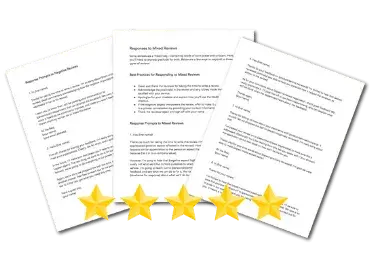
Table of Contents
- How to Respond to Customer Complaints
- How to Respond to a Complaint When the Customer Is Wrong
- Pro Tips for Mastering the Art of Handling “Customer is Wrong” Scenarios
- Customer Complaint Response Examples
- Tips for Responding to Customer Complaints
- Handling Customer Complaints
How to Respond to Customer Complaints
- Listen to or read the customer's complaint.
- Take a moment to process the criticism.
- Determine what action you'll take to address the problem.
- Thank the customer for their feedback.
- Apologize and reiterate your understanding of the issue.
- Clearly outline your plan to remedy the situation.
- Thank the customer again and offer follow-up information.
- Check to see if the customer is happy with the result.
- Incorporate changes from customer feedback.
Customer complaints come through different mediums like Google Reviews, phone calls, or even a handwritten letter. I’ve learned that each channel will offer different levels of frustration and require unique solutions to resolve the issue.
That said, I recommend creating a roadmap for responding to these complaints as a good starting point. From there, you can customize your approach for each interaction.
.png)
Free Review Response Templates
20 prompts to help you respond to customer complaints and comments.
- Positive Reviews
- Negative Reviews
- Mixed Reviews
- False/Slanderous Reviews
Download Free
All fields are required.
.png)
1. Listen to or read the customer's complaint.
When you have a customer complaint, the first action that I recommend taking is to listen to the issue and focus on what your customer is experiencing. Regardless of whether the complaint is over a price increase, a bad meal, or a service outage, this person is reaching out to you to express their frustration.
Though it can be tempting to ignore online reviews, you should give the same time and energy to those who submit feedback digitally as you would with in-person complaints. After all, research shows most consumers are using social media and the internet to discover new brands and products.
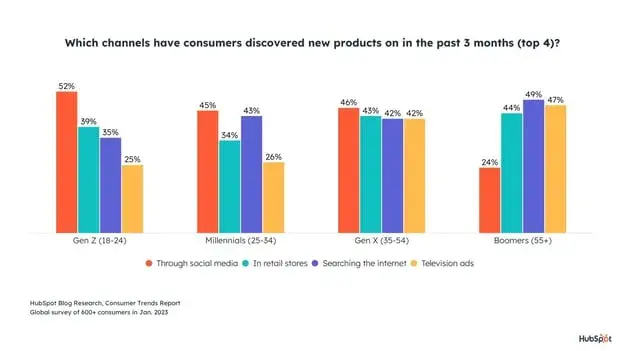
I would advise reading through online reviews as soon as you get them so you can provide customers with prompt and thoughtful responses.
Additionally, it’s easy to get defensive or to write off a complaint, but keep in mind that complaints rarely exist in a vacuum. If one customer is coming to you with this feedback, several others are keeping quiet about it. A customer's complaint should always be treated as legitimate, so give their story your full attention and empathy.
Pro tip: Take detailed notes of the customer's complaint. I would note information such as the date of the incident, any product or service numbers mentioned, how the customer is feeling, and any other relevant information that could help you resolve the issue.
2. Take a moment to process the criticism.
Some feedback can hit hard. It's not easy to acknowledge that you let a customer down, but getting to the root of the problem is an essential step to properly handling their complaint.
If you get this feedback online — such as an online review or through social media — you have some time to understand where the customer is coming from. Here’s a tip that I received from former HubSpot support rep, Clint Fontanella:

If you did not serve this customer directly or were not present when the incident occurred, you can also use this extra time to speak with your employees and investigate what happened.
Processing criticism is harder if you‘re getting it in real-time, like in person or over a phone call. This situation calls on you to put yourself in your customer’s shoes sooner rather than later and truly prioritize fixing the issue, which can only be done if you listen to the complaint and digest the meaning of it.
Pro tip: Once you‘ve taken a moment to process the complaint, reiterate your understanding back to the customer. This shows you’re listening and are taking their concerns seriously. Respond in a timely manner with an apology and a plan of action.
Fontanella recommends having a canned response ready that you can adapt for situations like these:
“While you never want to use the same response for different customers, canned responses give you a baseline to work from. One that I would rely on for cases like these was, ‘I appreciate your feedback about X and I understand how it can prevent you from accomplishing Y. I am going to see what I can do to either help you accomplish Y or find a workaround that can act as an alternative solution.’”
3. Determine what action you'll take to address the problem.
Consider setting up an action plan for recurring customer complaints. That way you'll know how to solve an issue almost immediately after listening to the details behind it. If possible, it’s worth using customer service software to take a look at service data and uncover common problems.
For example, you could generate reports to identify how often customers use their knowledge base, what kind of information they look for the most, and how many customers decide to take their issues to live agents — all the insights necessary to come up with a proper action plan.
However, as you’re well aware, sometimes a complaint comes completely out of left field and you’re not sure what to do. If you need some time to think about the best course of action, be honest with your customers. Tell them you need time to figure out how you can make it up to them and provide a timeline for when you'll reach out with a solution — or better yet, ask customers what they need for you to make it up to them and figure out if their request is doable.
Your customer will appreciate that you acknowledged their complaint even if you don't have a solution yet.
Pro tip: If a customer's complaint is due to an issue that you or your team caused, do not hesitate to offer something in return. Whether it be discounts, complementary products, or simple apology coupons, figure out what would help make up for the mistake.
4. Thank the customer for their feedback.
The first thing you should say when responding to a customer complaint is “thank you for letting me know.” I’ve harkened back to this idea a few times, but it’s important — the majority of customers who have complaints about your business just want to be heard and acknowledged.
Even if the customer‘s comments don’t make you feel good in the moment, you should still thank them for their insight. After all, the information that feedback contains can radically improve your customer experience.
Pro tip: If the customer is looking for a response, get back to them in a timely manner. Responding within at least 24 hours shows your customers that their feedback is taken seriously and valued. If you’re working on a real-time channel like live chat, be sure to respond as quickly as possible or install a chatbot to keep your support live 24/7. You can also use a help desk ticketing system to aid with timely processing.
.png)
Free Review Response Templates
20 prompts to help you respond to customer complaints and comments.
- Positive Reviews
- Negative Reviews
- Mixed Reviews
- False/Slanderous Reviews
Download Free
All fields are required.
.png)
5. Apologize and reiterate your understanding of the issue.
Immediately after thanking the customer, you should apologize for what happened and express empathy by explaining your understanding of the situation. This will let your customer know that you've taken the time to truly listen or read their complaint. Plus, restating the issue can help ensure you did not misinterpret what happened.
For example, let's say an account manager working for an ecommerce platform receives an email from her client, saying his online payment system temporarily went down. I would start the response like this:
Hi Mike,
Thanks so much for reaching out and letting us know. I'm so sorry about the issue with the payment system — once we noticed the issue, we put our team on it and it was resolved within minutes.
That said, I know that doesn‘t make up for the revenue you lost and may not get back. I completely understand you could have lost business because of this issue, and that’s not acceptable.
This response thanks the customer for sharing feedback, apologizes for the issue, explains what led to the situation, and shows an understanding of how the issue affected the customer. Mike now knows that his account rep fully understands the reason for the complaint and values his business and feedback.
Pro tip: Test different apologies to find the one that best fits your brand voice. For example, you could say “We're sorry we let you down,” or "We apologize for not meeting your expectations.” See which resonates the most with your customers.
6. Clearly outline your plan to remedy the situation.
Not only should you apologize when a customer's experience is not satisfactory, you also need to explain how you will fix the problem. If the example above ended after those two paragraphs, I would have hardly handled it well and I wouldn’t blame the customer if they felt they were left empty-handed. A proper response to a customer complaint is incomplete without an explanation of what happens next.
I would highly recommend going above and beyond when remedying customer complaints. Consider offering some kind of incentive to give your business another chance, like a coupon or gift certificate. This will allow you the opportunity to win back the customer by providing them with a better experience.
Let's return to the example of the broken payment processor, and pick things up where we left them to show how we can remedy this situation:
The product team is making it their new priority to ensure this problem does not happen again. We were able to identify the reason for the issue quite quickly and will be working to safeguard it from a similar outage in the future so you can feel confident using our software moving forward.
In the meantime, we want to make this up to you. I was able to get your software fees for this and next month waived. You should see a credit in your account in the next 3-5 business days – please reach out to me if you do not see that. I hope this in some part makes up for whatever loss your business incurred during the outage.
Thanks,
[Your Name]
This explanation outlines the improvement to the service and compensates the customer for his potentially lost revenue. Now, he knows more information about the issue, what's being done to prevent it from recurring, and is getting free software for sharing his criticisms — this kind of response encourages customer feedback and makes it more likely this customer will share his opinion moving forward.
Pro tip: It’s always nice to offer incentives, but it’s not always possible. In these cases, sometimes just letting the customer know that you will cycle their feedback upward is enough to show that you are taking their complaint seriously.
7. Thank the customer again and offer follow-up information.
If you've followed the steps up until now, the complaint should be sufficiently addressed and your customer should feel like the issue has been fully resolved.
If that's the case, thank the customer once again for reaching out and offer follow-up information or instructions if the customer needs to get back in touch with you.
This step is particularly important for online reviews, which contain much less back-and-forth discussion (if any) compared to complaints made over email, on the phone, via social media, or in person. If customers are writing a review online, they might not have the contact information to follow up with the best person, so consider leaving the name, phone number, and/or email address of the person to speak to at the end of a negative online review.
If you’re in a situation where you need more time to offer a solution, be sure to provide your contact information and give the customer a timeline for when you’ll follow up with them.
Pro tip: Send a customer satisfaction survey shortly after you address the complaint to obtain data about how the customer viewed your resolution process. The survey shows you what you're doing right and wrong, and which areas you could improve upon in the future.
.png)
Free Review Response Templates
20 prompts to help you respond to customer complaints and comments.
- Positive Reviews
- Negative Reviews
- Mixed Reviews
- False/Slanderous Reviews
Download Free
All fields are required.
.png)
8. Check in to see if the customer is happy with the result.
After some time has passed you should follow up with the customer to see if they're satisfied with the resolution.
The time frame is definitely fuzzy for this one. Some issues can be followed up within a few days or even weeks after they were resolved, while more time-sensitive ones warrant a follow-up within a day.
If your solution involves giving the customer a gift certificate or free product, reach out to them for feedback after they've had another experience with your business.
Use your gut here: It's better to over-communicate than the other way around, as it shows you really do care about the problem and wish to make up for it.
Pro tip: If you can, offer an additional discount or perks for their loyalty in the future. This lets them know that your business is willing to make it up to them in the long run. Plus, it's a great way to show appreciation for their patience.
9. Incorporate changes from customer feedback.
After all is said and done, it‘s time to follow through with your promises. If you complained about a mishap and were promised a change that didn’t happen, wouldn't you be pretty upset?
Not every complaint warrants a change in business strategy. For example, if one customer complains her shipment was damaged, this doesn't mean you need to overhaul your entire supply chain. However, you should take note of how you handled the situation and keep it as a reference in case a similar situation comes up again.
At HubSpot, Fontanella’s team would store all of this information digitally via its help desk. This provided an overview of how the support team was doing and made it easier to identify trends in customer feedback.
This is on you to listen carefully, draw connections between complaints, and determine if larger action is warranted. If you receive multiple complaints about one employee, one product, or one feature, that probably means there's a problem with that employee, product, or feature.
For example, if 100 customers complain about having damaged shipments, maybe you should look into your warehouse or shipping centers.
Pro tip: Create a feedback loop so customers can easily alert you to potential issues. This way, you can quickly identify any problems before they become a bigger issue. Plus, it shows customers that their opinion matters and that you're always looking for ways to improve the customer experience.
This process has proven to be a reliable method for responding to customer complaints. Dani Wawryk, former Director of Corporate Marketing and Communications at Vendasta, outlines a similar process in the video below:
How to Respond to a Complaint When the Customer Is Wrong
Let’s face it — not all customer complaints are created equal. Sometimes, despite your best efforts, you’ll encounter situations where the customer is simply mistaken. Perhaps they misunderstood a policy, overlooked a key detail, or are operating under incorrect assumptions about your product or service.
These scenarios can be particularly challenging, often times testing your patience and communication skills. However, with the right approach, even these tricky situations can be turned into opportunities to build trust, demonstrate your expertise, and solidify customer relationships.
In my years navigating the dynamic world of customer service, particularly within the B2B SaaS ecosystem, I’ve encountered my fair share of these “customer is wrong” scenarios. Through simple trial and error, and by staying informed on the latest industry trends, I’ve developed a nuanced approach that prioritizes empathy, education, and solution-oriented communication.
Why “The Customer Is Always Right” Isn’t Always Right
The age-old adage “the customer is always right” has been a cornerstone of customer service best practice. While it certainly emphasizes the importance of prioritizing customer satisfaction, it’s crucial to recognize that it doesn’t mean blindly agreeing with every customer complaint, or worse, promising something you can’t deliver.
In today’s era, customers are more empowered than ever. They have access to a wealth of information at their fingertips, and they’re not afraid to voice their opinions, both positive and negative.
While this presents challenges, it also offers opportunities for businesses to showcase their expertise, transparency, and commitment to customer education.
The High Cost of Mishandled Complaints
Before we dive into the strategies, let’s take a moment to understand the context. A mishandled complaint, especially when the customer is mistaken, can have far-reaching consequences.
- Damage to Reputation. In today’s hyper-connected world, negative word-of-mouth can spread like wildfire. A single dissatisfied customer can share their experience with countless others through online reviews, social media posts, and personal conversations, potentially damaging your business’s reputation.
- Loss of Customer Loyalty. Customers who feel unheard or disrespected are unlikely to remain loyal customers. They may take their business elsewhere and discourage others from engaging with your products or services.
- Employee Morale. Dealing with difficult customers can take a toll on your customer service team. If they feel unsupported or unequipped to handle these situations, it can lead to decreased morale and even employee turnover. I like to say that happy employees equal happy customers.
Turning Challenges into Opportunities
Now that we understand the importance of handling these situations effectively, let’s explore a ste-by-step approach to navigating customer complaints when the customer is wrong.

1. Empathy first, always.
Even if the customer is factually incorrect, their feelings are valid. They are experiencing frustration, perhaps even anger, and they’ve come to you seeking a resolution. It’s important to start by acknowledging their emotions and demonstrating that you understand their perspective. This simple act of empathy can de-escalate the situation and create an opening for a productive conversation.
Here are some empathetic phrases you can use:
- “I understand your frustration, and I want to help.”
- “I can see why this is confusing/upsetting, and I apologize for any inconvenience this has caused.”
- “Thank you for sharing your concerns. I want to make sure we get this resolved for you.”
2. Listen actively and gather information.
Before jumping to conclusions or corrections, take the time to truly listen to the customer’s complaint. Pay attention not only to their words but also to their tone of voice and body language (if interacting in-person). Ask open-ended questions to encourage them to elaborate on their concerns and to gather as much information as possible.
Here are some examples of effective questions:
- “Can you tell me more about what happened?”
- “What specifically led you to believe that…”
- “How has this issue impacted your experience with our product/service?”
By thoroughly understanding the customer’s perspective, you’ll be better equipped to address their concerns effectively and provide a resolution that truly meets their needs.
.png)
Free Review Response Templates
20 prompts to help you respond to customer complaints and comments.
- Positive Reviews
- Negative Reviews
- Mixed Reviews
- False/Slanderous Reviews
Download Free
All fields are required.
.png)
3. Clarify and educate.
Once you have a clear understanding of the situation, it’s time to provide the correct information. It’s important to do this in a way that’s both informative and respectful. Avoid using accusatory language or making the customer feel foolish for this misunderstanding.
Here are some tips for clarifying and educating effectively:
- Use Neutral Language. Avoid phrases like “you’re wrong” or “you misunderstood.” Instead, focus on providing objective, solution-oriented information.
- Provide Evidence. If possible, back up your explanation with evidence, such as your company’s policies, terms of service, or product documentation.
- Offer Additional Resources. If the misunderstanding stems from a lack of information, provide links to relevant articles, tutorials, or FAQs. This empowers the customer to learn more and can prevent similar issues in the future.
4. Find common ground and offer solutions.
Even if the customer is mistaken, look for opportunities to find common ground and offer solutions. Often times an easy way to get positive customer satisfaction is by demonstrating your commitment and willingness to go the extra mile, even in challenging situations.
Here are some examples that have worked for me:
- One-time Discount or Credit. This can help appease the customer and show that you value their business, even if you can’t fully meet their initial request.
- Additional Support or Training. Beyond self-service, if the misunderstanding stems from a lack of knowledge about your product or service, offer additional support or training to help the customer get the most out of their experience. This is especially effective in B2B environments.
- Sincere Apology. Sometimes, a simple apology for the inconvenience caused by the misunderstanding can go a long way in diffusing the situation, avoiding negative sentiment, and rebuilding trust.
5. Remain calm and professional no matter what.
It’s essential to maintain your composure, even in the face of frustration or anger. You’re not just representing yourself — you’re representing your company. Your professionalism will leave a lasting impression on the customer, regardless of the outcome of the interaction.
Here are a few strategies to help you maintain composure in high-pressure situations that have worked for me:
- Take a Deep Breath. If you feel yourself getting flustered by the interaction, take a moment to pause and breathe. Taking a deep breath can significantly help in managing stress and maintaining composure. The simple act of pausing to breathe can lower heart rate, decrease blood pressure, and enhance emotional regulation — allowing you to respond more thoughtfully under pressure.
- Use Positive Language. Avoid phrases that sound accusatory or defensive. You want to focus on using positive language that emphasizes your willingness to help. This not only diffuses potential conflicts but also builds trust and rapport with the customer.
- Focus on the Solution. While sometimes the conversation can get sidetracked, you want to continue focusing on finding a resolution, even if it’s not the one that the customer expected. By doing so, you demonstrate your problem-solving skills and your commitment to customer satisfaction.
By applying these strategies, you can learn to effectively manage stressful, high-pressure situations and ensure that your interactions remain professional and constructive.
6. Know when to walk away.
While it’s important to strive for a positive resolution, there are rare instances where a customer may be unreasonable, abusive, or unwilling to engage in a productive conversation. If you’ve exhausted all efforts to de-escalate the situation and the customer continues to be disrespectful, it’s okay to politely end the interaction. Remember, you’re well-being matters.
Personally, as someone who has coached and led team members in the trenches of service, I believe that you can only achieve high customer satisfaction when you have a bedrock of high employee satisfaction.
It’s more than okay to lean on your manager for guidance, but here are some phrases you can use to gracefully exit the conversation:
- Boundary-Setting. “I understand you’re frustrated, but I’m not comfortable continuing this conversation if you’re going to use abusive language.”
- Diplomatic. “I’ve done my best to address your concerns today, but it seems we’ve reached a standstill. I wish you the best moving forward.”
- Firm. “I’m going to end this call now. Please feel free to reach out again if you’d like to discuss this further in a respectful manner.”
In my experience, knowing when to walk away can be just as crucial as resolving the issue at hand. I’ve found that sometimes, despite our best efforts, continuing a conversation with an uncooperative or disrespectful customer only further escalates the situation. Prioritizing your own well-being and recognizing when to exit will help you preserve your professional integrity and prevent burnout down the road.
With this in mind, I’ll share some expert tips for effectively managing those challenging “customer is wrong” situations.
Pro Tips for Mastering the Art of Handling “Customer is Wrong” Scenarios
Even the most seasoned customer service professionals encounter situations where the customer is simply wrong.
I remember one instance during my time at a major web services company in Silicon Valley. A large web publishing client was adamant that our ad services platform had caused their website to crash. After hours of troubleshooting, I discovered the issue stemmed from a recent update they had made to their codebase. It was a delicate situation, but by following the best practices outlined in the previous section, I was able to guide them to the root cause, de-escalate the situation, and resolve the issue without damaging the relationship.
It’s always important to aid yourself in these instances, both before and after. Here are some tips that have helped me.
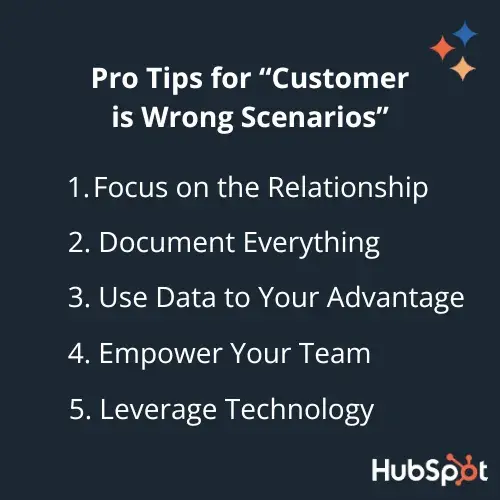
Focus on the Relationship
The immediate issue might not be resolved according to the customer’s exact expectations, but the long-term relationship should be prioritized. A little understanding and flexibility can go a long way in building customer loyalty.
Document Everything
Keep a detailed record of the interaction, including the date, time, customer information, and a summary of the conversation. This can be invaluable if the issue escalates or needs to be reviewed later.
Use Data to Your Advantage
If you notice a pattern of misunderstandings, it’s a sign that you need to improve your communication resources. Consider updating your FAQs, website copy, product details, or onboarding process to provide clearer information.
Proactive communication can be one of your best tools for preventing future complaints, saving you time and energy in the long run.
Empower Your Team
Ensure your customer service team has the training and resources they need to handle these situations confidentially and effectively. Role-playing exercises, access to knowledge bases, and clear escalation procedures can all contribute to a more empowered and capable team.
Leverage Technology
We’re in the age of AI. Leverage tools like conversational chatbots and AI-powered customer service platforms to help streamline your responses and further your ability to provide support when and where your customers need it. These technologies can free up your team to focus on more complex issues and provide a faster, more efficient customer experience.
Handling customer complaints, especially when the “customer is wrong,” requires a balance of empathy, clarity, and professionalism. With the right approach and a genuine desire to understand your customers, even the most challenging interactions can be transformed into opportunities that ultimately elevate your brand or business’s reputation.
Next, I’ll share some complaint response examples you can modify for your own support team.
Customer Complaint Response Examples
As a seasoned professional, I understand that timely and empathetic responses are crucial when addressing customer concerns. I’m a big fan of crafting canned responses that help maintain exceptional service standards, even during peak periods. I’ve put together a collection of adaptable response templates for various customer scenarios.
These templates aren’t just about efficiency, but they’re designed to foster genuine connection and demonstrate your commitment to resolving issues effectively. Feel free to personalize them to reflect your unique voice and further enhance the customer experience.
1. Sample Letter Responding to a Complaint
Hello, [Customer Name],
I‘ve had a chance to review your complaint, and I’d like to apologize for [Issue]. Thank you for taking the time to share that with me so I can make it right. [Rephrase issue] is something that our team at [Company] doesn't take lightly.
Based on what you‘ve shared with me, here’s how I can resolve the problem. [Explain solution.]
I'll be working on this ticket from start to finish, so you can respond to me directly with any follow up questions. How does that sound?
In the meantime, I‘ve shared your feedback with our team and we’re [method to ensure the root cause of the complaint is addressed].
Thanks again for trusting us with your business.
Sincerely,
[Your name]
What I like: What works about this letter is that it allows customer service representatives to take responsibility for solving the problem. Instead of deflecting blame onto the “company” as a whole by using “we” statements, the rep uses “I” statements to make the conversation more personal. This is a genuine way to build trust with the customer and assure them that their feedback isn't falling into a void.
2. Sample Email Responding to a Complaint
Hello, [Customer Name],
Thanks for bringing the duplicate charge issue to our attention. We discovered that this was an isolated incident, and it has since been resolved. You‘ll see a full refund in your account within seven days. I can assure you that this won’t happen again and we have put strict measures in place to prevent it in the future.
I recognize that this was an inconvenience, and I‘d like to regain your trust. I’ve credited your account for next month's payment — this is in addition to your full refund. Let me know if you do not see that by tomorrow. [Company name] appreciates your business and we hope to continue serving you moving forward.
Thank you,
[Team Department]
What I like: This simple, yet effective email covers all the bases of handling a customer complaint. It acknowledges the customer's issue, offers an apology, and goes above and beyond to resolve the matter. Finally, the rep extends gratitude to the customer for doing business with the company and expresses interest in continuing the relationship now that the complaint has been handled.
3. Sample Phone Script Responding to a Complaint
Representative: “Hi there, thanks for calling Pearl Provisions. With whom do I have the pleasure of speaking with today?”
Customer: “Hello, my name is Pam. I‘m not happy with the service I received last week at Pearl Provisions. My family’s food was served cold and I didn't receive any acknowledgement of the issue by the manager.”
Representative: “Pam, I'm sorry to hear you had a bad experience at our restaurant. I understand that the meals you received were not served according to our high standards and there was no recourse to make things right.”
Customer: “Yes that is correct and I'd like some sort of redress for the inconvenience.”
Representative: “Pam, I can assure you that I‘ll make things right. We hope you’ll give us the opportunity to earn your business again. First, I‘ll pass your feedback to the manager of the restaurant and confirm that this incident will be reviewed and resolved. With your permission, I can also mail you a gift card that you can use at the restaurant anytime within the next month. Does that sound like something you’d be interested in?”
Customer: “Yes that would be great. Thank you.”
Representative: “Alright, let's get that gift card mailed to you.”
What I like: Restating the issue goes a long way in this response template. In doing this, the rep assures the customer that they understand the problem and the impact it's having on their business. Following this up with an applicable solution makes this a practical template that can be customized for just about any type of complaint.
4. Sample Response to a Technical Complaint
Hi, [Customer Name],
Thank you for reaching out and letting us know about the issue with your subscription renewal. I sincerely apologize for the inconvenience your disruption of service may have caused.
Once our team looked into the issue, we realized there was a software bug on our end that prevented your subscription from automatically renewing and quickly resolved it. Our development team is making it a priority to ensure this issue does not happen again.
That said, I recognize how frustrating this experience must have been. So, I want to make it up to you by waiving your subscription fees for the next three months. A credit should appear in your account within the next 3-5 business days. Please reach out to me if you have any issues accessing it.
Thanks,
[Your Name]
What I like: I like this response because it acknowledges what happened, accepts responsibility, and quickly resolves the problem. Plus, the rep goes above and beyond by offering to waive the customer's subscription fees.
5. Sample Response to a Shipping Complaint
Hi, [Customer Name],Thank you for letting us know you haven't yet received your order. I sincerely apologize for the inconvenience and understand your frustration.
According to our records, your package was sent out from our warehouse on [Date]. I‘ve looked into your order’s status via UPS and it is currently listed as [status] and is expected to arrive by [Date]. To stay updated with your order's status, you can visit this link: [link].
In the meantime, I‘ve shared your feedback with our team and we’re committed to doing everything we can on our end to prevent shipping delays.
If you don't receive your delivery by the expected arrival date, please let me know by responding to this email. We appreciate your business and hope to continue serving you.
Thanks,
[Your Name]
What I like: In this scenario, the rep solves for the customer by providing information on when their order was shipped, a status update, and when they can expect their order to arrive. They also offer instructions on how to get back in contact with them in case the package does not arrive on time.
6. Sample Response to a Social Media Review
Hey, [Customer Name],
Thanks for taking the time to share about your experience at [Company]. I understand that [Rephrase issue] and I apologize that you were not served according to our high standards.
I‘ve passed your feedback along to our management team and will follow up with them to ensure that this issue is prevented in the future. Additionally, I’d like to make it up to you by sending you a gift certificate that you can use at any of our locations within the next six months. Please private message us your email address and we can get it sent over to you.
Best,
[Your Name]
What I like: Given the public nature of social media reviews, it‘s important to ensure your response is crafted with understanding and care. Not only will addressing the complaint help regain the customer’s trust, but it can also showcase your company's customer service to prospective customers and potentially attract new business. In the example above, the rep addresses the problem, apologizes for it, and presents an offer to remedy the situation.
7. Sample Response to a Billing Complaint
Hi, [Customer Name],
I appreciate you bringing this billing error to our attention. I’m truly sorry for the mistake on your recent bill and any inconvenience it may have caused.
We handle these matters with a sense of urgency, so I have forwarded the details to our billing department. Rest assured I will review this mistake with the team so that we prevent similar instances in the future. I’d also like to extend a 10% discount on your next bill with us, which will be automatically applied.
If you do not see the correction to this current bill within 24-48 hours, please reply back to this email and I’ll be sure to look into it further. Thank you for your understanding and patience.
Best,
[Your Name]
What I like: Addressing billing complaints with a personalized and sincere approach helps reassure the customer and demonstrates your company’s dedication to resolving issues. This response format immediately acknowledges the mistake, apologizes for the error, takes action to correct the issue, and extends a personal touch by offering something extra to the customer.
8. Sample Response to a Product Quality Complaint
Hi, [Customer Name],
Thank you for sharing your feedback about your recent purchase from [Company]. I’m sorry to hear that the product did not meet your expectations and that you received a defective item.
I’ve notified our product team about this issue to ensure it does not happen again in the future. Considering the circumstances, I’d like to offer you a replacement product or full refund. Please let me know which option you prefer by replying to this email. I’ll be sure this is taken care of promptly.
I appreciate your understanding and look forward to hearing from you.
Best,
[Your Name]
What I like: Handling product quality complaints with empathy and a proactive approach helps build customer trust and shows your commitment to excellence. By offering a replacement or full refund, you’re ensuring the customer has a positive outcome. This response format acknowledges the problem, apologizes for the inconvenience, and offers a clear resolution with options.
9. Sample Response to a Customer Wait Time Complaint
Hey, [Customer Name],
Thank you for bringing this to our attention. I apologize for the longer than expected wait time you experienced. I understand your time is valuable, and our department strives to provide prompt service to all our customers.
I have notified the rest of the team about this complaint so that we can ensure a quicker service in the future. As a gesture of appreciation for your patience, I would like to extend a [Discount Percent or Credit] on any future purchase with us. If it does not automatically apply at checkout, you can use code [Discount Code].
Please don’t hesitate to reach out if I can be of further assistance. Always happy to help.
Best,
[Your Name]
What I like: This response shows we’re on your side by quickly owning up to the longer wait and making sure we fix it for next time. Providing a discount for their next visit is a great way of saying “thanks for sticking with us – we’re here to make things right and keep you happy!” By encouraging continued engagement, you foster positive relationships with the customers.
10. Sample Chat Script Responding to a Complaint
Customer: “Hello…”
Agent: “Hello, my name is [Your Name], I’m a member of the [Company] support team. With whom do I have the pleasure of chatting with today?”
Customer: “Hi, my name is [Customer Name]. I’m having a problem. Every time I try logging into my account, it says that no account exists. I’m afraid my account was deleted.”
Agent: “Thanks for sharing this information [Customer Name] and I’m sorry you’re running into issues logging in. Not to worry though! If you created an account in the past, there should be a record of it in our system. I say we try a password reset to make sure the account exists with your intended email address. How does that sound?”
Customer: “Yeah, that’s fine.”
Agent: “Perfect! I have now triggered the password reset email to be sent directly to your email. If your account does exist, you should receive it momentarily.”
Customer: “Yes, I just did. Wow, I can’t believe it was just a password issue. I could have sworn I knew it. I’m happy to know my account was secure.”
Agent: “Of course! I’m glad we were able to resolve this today and get you access to your account. Was there anything else I could help you with today?”
Customer: “No, I’m all set. Thank you for your help.”
Agent: “Your welcome [Customer Name]. This chat window will close now, but feel free to open a new chat window if you need further assistance. Have a great rest of your day!”
What I like: This chat script demonstrates a customer-centric approach to resolving issues. The agent starts by acknowledging the problem and reassuring the customer, then takes immediate action by suggesting a practical solution – resetting the password. The agent maintains a friendly tone throughout the conversation, encouraging a positive interaction. The resolution is swift and the agent ensures the customer is satisfied before concluding the interaction, reinforcing the perception of helpful and efficient customer service.
11. Sample Response to a Team Member Complaint
Hi, [Customer Name],
Thank you for bringing this to our attention. I apologize for the inconvenience you experienced due to the lack of knowledge from my team member.
Ensuring the team is well-informed is a top priority. I’ve shared your feedback with our training department to address this issue promptly. We are committed to providing comprehensive training and ongoing support to all [Company] team members in order to improve their product knowledge and ensure exceptional service.
If there’s anything else we can assist you with, or if you have further feedback, please feel free to reach out to us directly.
Best regards,
[Your Name]
What I like: Addressing complaints about team members’ product knowledge with prompt acknowledgment and a commitment to improvement demonstrates the dedication to delivering knowledgeable and reliable service. This response format ensures that the customer concerns are taken seriously, with steps taken to enhance the team training and support, while fostering better customer experience in the future.
12. Sample Response to Deceptive Advertising Complaint
Hi, [Customer Name],
Thank you for reaching out and sharing this feedback. I sincerely apologize for any confusion or inconvenience caused by our advertising.
Ensuring transparency and accuracy in [Company] communications is important to us. The team has immediately reviewed the advertising in question and taken steps to correct any misleading information.
Your feedback is invaluable to us, and we are committed to maintaining high standards of honesty and clarity in all our communications.
If you have any further questions or concerns, please do not hesitate to reach out.
Best regards,
[Your Name]
What I like: The team member apologizes for any confusion or inconvenience and takes immediate action to address the concerns. By providing more context, the interaction fosters trust with the customer while demonstrating a commitment to ethical advertising practices.
Let’s wrap up with some general tips that I gathered on responding to customer complaints.
Tips for Responding to Customer Complaints
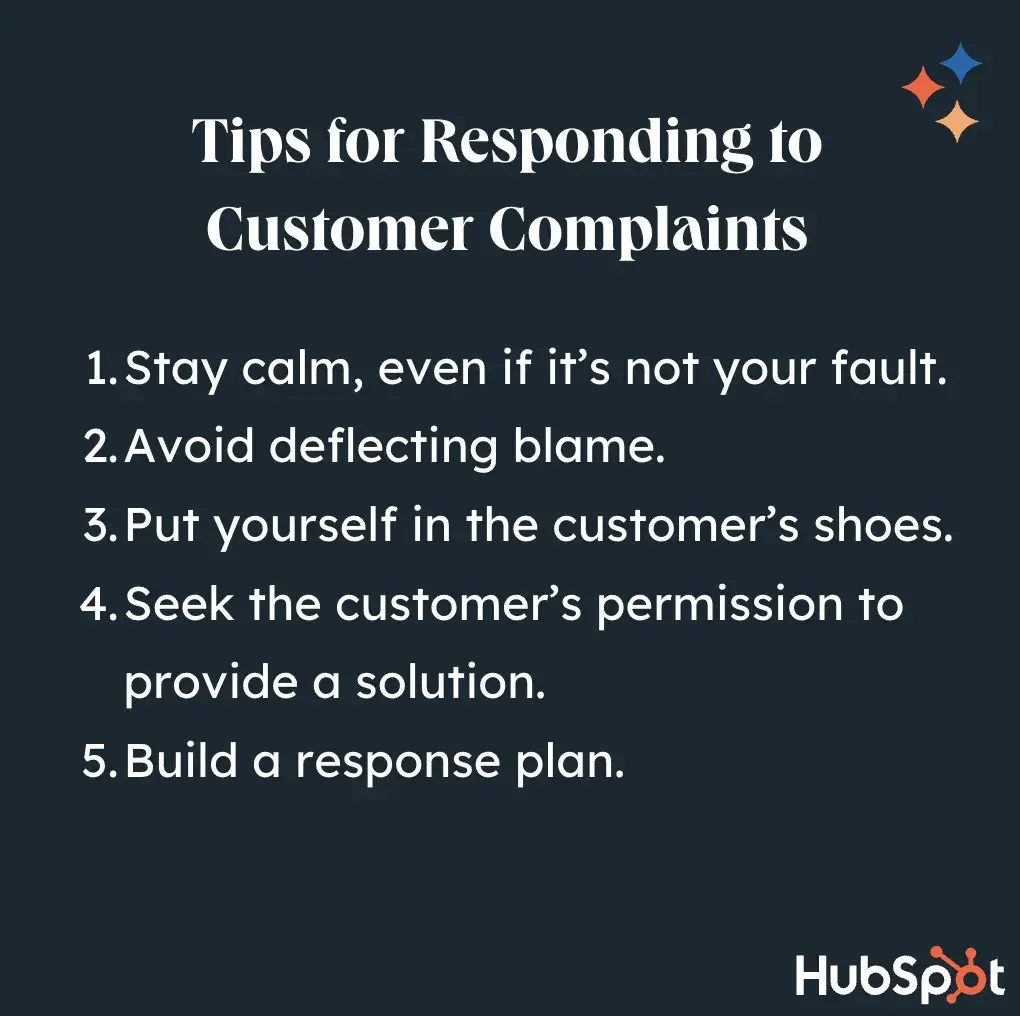
1. Stay calm, even when it's not your fault.
It would be naive to pretend every customer complaint is a valid one. Sometimes customers get things wrong, mix up companies, and make mistakes. It can be frustrating to proceed calmly without letting the customer know where they went wrong immediately upon leaving a negative review but don't give in to the temptation.
You'll still want to follow the steps above to diffuse the situation and be empathetic. Fontanella advises, “to make the customer feel like they’re right, even if they were wrong in the first place.”
Once the customer is calm, you can kindly explain to them where the mix-up happened and offer a genuine explanation. As soon as the customer understands the issue, politely ask that they remove the negative review — that‘s if they don’t offer to do it first.
Pro tip: Remember to assume positive intent during encounters like these. In my experience, a bit of calmness and understanding goes a long way when resolving customer complaints.
2. Avoid deflecting blame.
As a member of the customer service team, the buck stops with you. If your sales team makes a huge blunder, don‘t let the customer know that. After all, they don’t care who did it, they just want a solution. Plus, it doesn't build trust with the customer or your sales team to throw them under the bus.
Get comfortable accepting criticism that has been misplaced. Instead, you can relay the feedback behind the scenes in a respectful manner — a training refresher can be the perfect forum to address the root cause of a complaint without playing the blame game (and nobody wins in the blame game).
3. Put yourself in the customer's shoes.
A bit of empathy makes all the difference when resolving customer complaints. After all, you‘re a customer more often than you’re a customer service representative, so put yourself in their shoes when you find yourself in these situations. How would you want the issue resolved? What would make you do business with your company again?
Provide the customer with a fair and constructive experience to get through the turbulent situation. Put their feelings and needs first as much as you can within the scope of your customer service policies.
4. Seek the customer's permission to provide a solution.
Before you spout off a decision in haste, ask the customer for their permission to allow you to solve the problem: “I understand how inconvenient this is for you. Can I share a few options I've come up with to make things right?”
It seems obvious that they'd want you to fix things, but asking for permission in a heated exchange gives the customer a moment to willingly cooperate and come to the best solution. It puts you on their side and positions you both against the problem rather than customer vs service rep.
Bonus Tip: Build a response plan and bank.
If your business receives feedback often, make sure you have a documented brand voice and response strategy in place.
Pro tip: Remember, you may want to download and customize these review response prompts if you find yourself spending too much time responding to reviews each week.
Handling Customer Complaints
Let’s be honest, addressing customer complaints isn’t anyone’s favorite task. I’ve had my fair share of tough conversations and frustrating interactions over the years. That being said, I’ve also come to see it as a crucial part of the job — and more importantly, an opportunity. It’s a chance to demonstrate your commitment to customer satisfaction, build lasting relationships, and differentiate yourself from the competition.
Investing time in crafting a thoughtful response strategy and handling each complaint with care sends a powerful message: you value your customers’ opinions. This approach fosters loyalty and reduces the likelihood of customers seeking alternatives.
So, whether you’re addressing a negative review, a social media post, or a direct conversation, remember to take a deep breath, channel your inner empathy, and stay focused on the solution. Every interaction is an opportunity to turn a challenge into a win.
Editor's note: This post was originally published in March 2020 and has been updated for comprehensiveness.
.png)
Free Review Response Templates
20 prompts to help you respond to customer complaints and comments.
- Positive Reviews
- Negative Reviews
- Mixed Reviews
- False/Slanderous Reviews
Download Free
All fields are required.
.png)




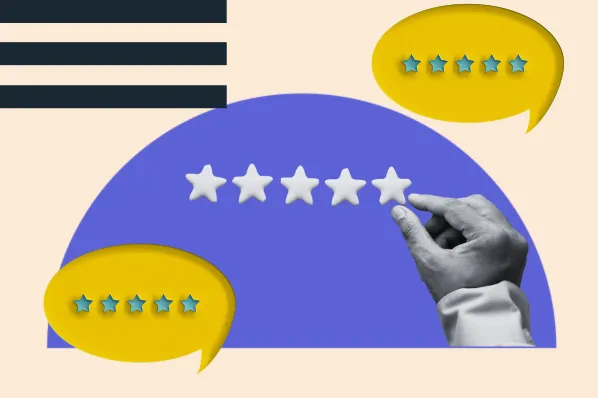
![5 Expert Tips for Responding to Customer Reviews [+ Examples]](https://www.hubspot.com/hubfs/customer%20reviews%20examples_featured.png)



